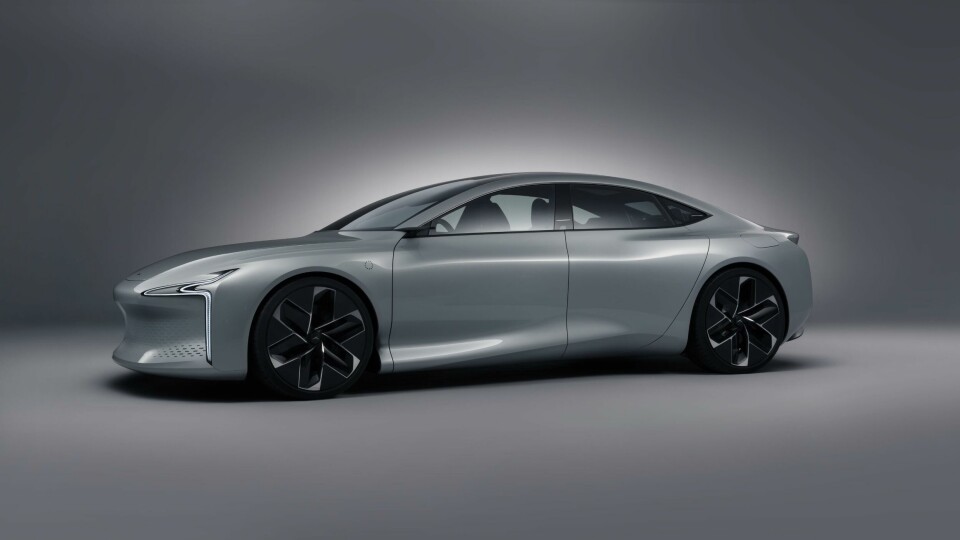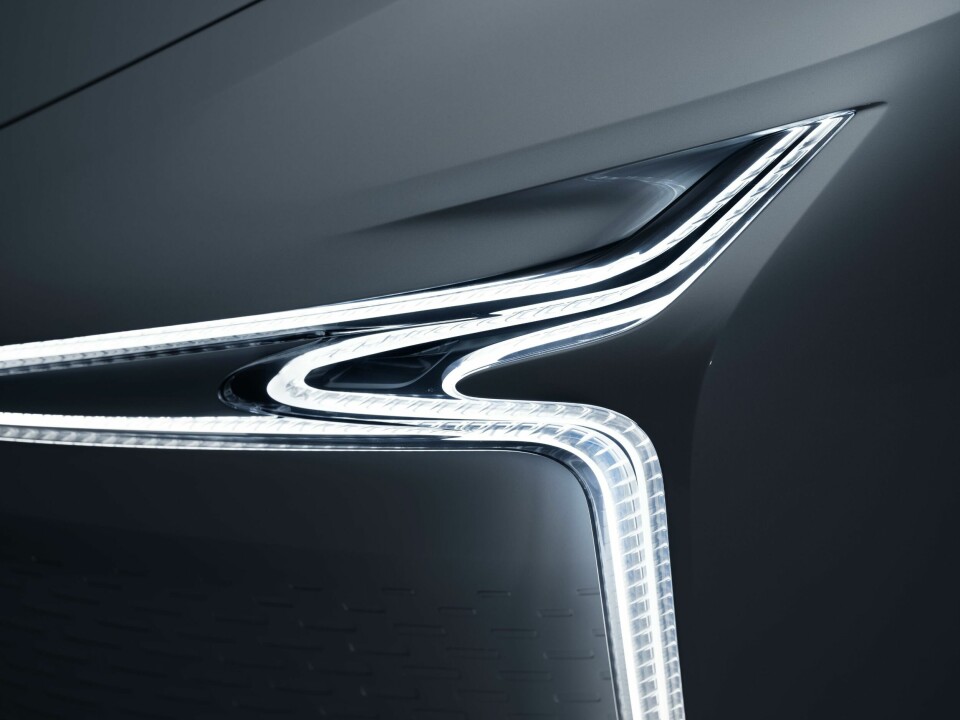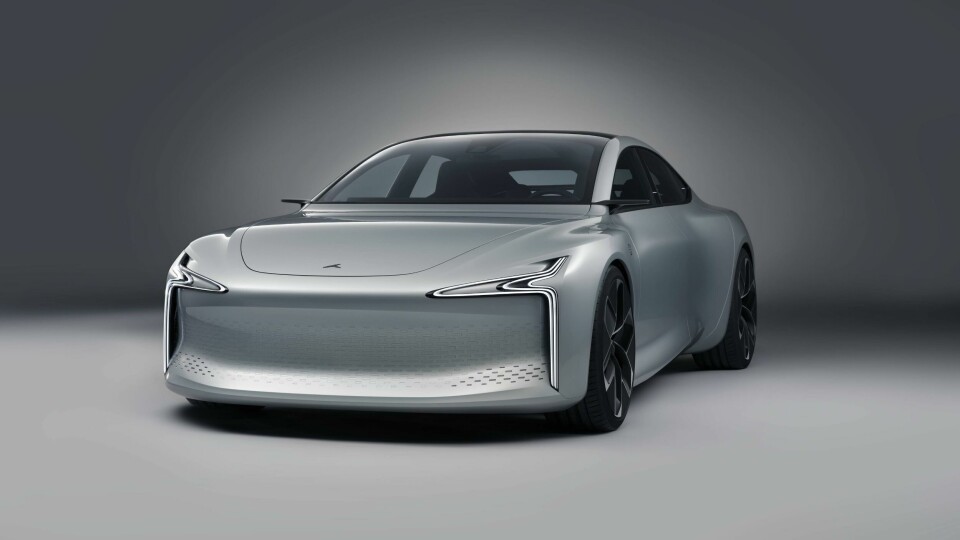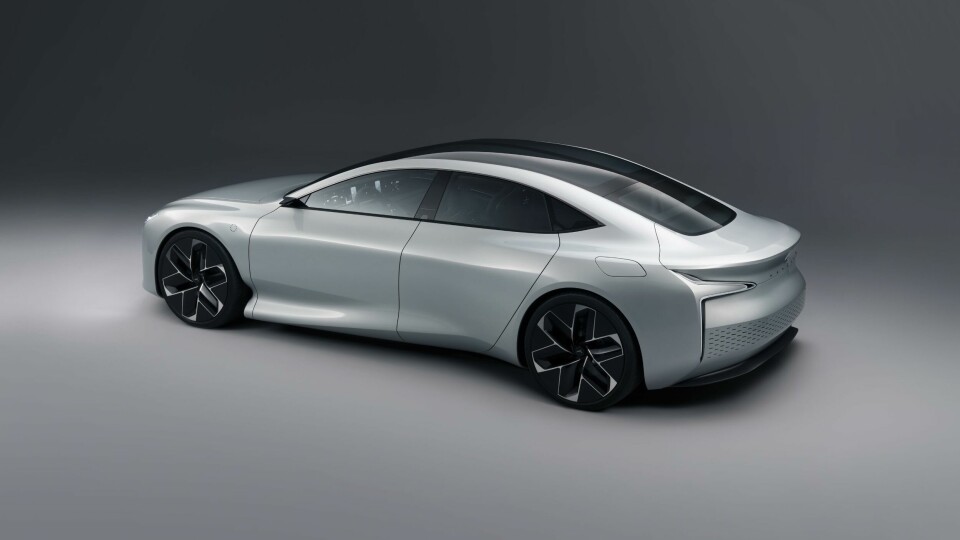
FCEV layout inspires return to conventional form
Car Design News chats to Hopium’s chief designer about the Machina Vision concept
Much has been said of the shift to electric vehicles and how this will impact car design moving forward. Perhaps understandably given the lack of examples out there, less has been said of the hydrogen-powered variety.
One brand throwing its hat in the ring is Hopium, which at the latest Paris motor show revealed the Machina Vision concept. Far from the pebble-shaped look that we have come to expect of many electric sedans, the Machina sports a more conventional silhouette. With a flat grille, high nose and sculpted side sills, it is a refreshing return to form that is not driven by the demands of aerodynamics.
Felix Godard, the up-start’s chief design officer, spoke to Car Design News about how the fuel cell system influenced both the exterior and interior design.

Car Design News: Where were you before Hopium?
Felix Godard: I was an industrial design student at the Strate college in Paris. When I graduated, I moved to Stuttgart for a job with Porsche where I worked on the interior of the Mission E concept car. This was good luck as I got into electric cars very early on. After that, I had the chance to move to LA and work at Tesla, working on production and concept interiors. The design team was very close to the engineers so that was very good experience – not only about making nice designs but also refining the design based on the technology that enables it.
From there I moved to San Francisco to join Lucid Motors, working primarily on interiors but also mixing exteriors and interior designs to consider the big picture. This was an extremely good experience to see how the design and engineering teams worked together to optimise the architecture.
CDN: You’re clearly used to building a relationship with the engineering teams. This must have been useful when it came to figuring out how to optimise the design for a fuel cell powertrain?
FG: Yes, absolutely. It was hugely beneficial for when I moved to Hopium.
There is a separation in the centre console to run the H2 tanks, creating the most comfortable layout but also improving hydrogen storage
CDN: When did the project start?
FG: It all started about three years ago. The plan was just to make a beautiful, emotional sedan at first. But very early in the process, our founder’s involvement in Mission H 24 – a project to being a hydrogen powered racer to Le Mans – meant that he became heavily involved in FCEV engineering. From there we were able to start to understand the true need for an FCEV platform very early in the process: the importance of cooling, the size of the fuel cell system in the front, and the importance of storing as much hydrogen in the car to reach a 1,000km range. Those were blurry ideas at first, but it set the basis for what I started sketching.
CDN: How did this translate into the design we see with the Machina Vision?
FG: With an FCEV you don’t necessarily need to do a monolithic volume, you can keep something fairly conventional. Look at the cab-forward windshield and the long hood, which we need in order to package the fuel cell system in the front.
CDN: There is not a typical bench seat in the rear but a four-seater layout. Is that because the hydrogen tanks run along the centre of the car?
FG: The interior was structured to be as comfortable as possible, but you can see that the whole space is also designed around the integration of the hydrogen (H2) tanks. The four-seater layout is a statement of luxury – each rear occupant has a truly individual seat. It enables this separation in the centre console to run the H2 tanks, creating the most comfortable layout but also the optimal amount of hydrogen that can be stored in the vehicle. It’s a radical step in architecture.
CDN: Is it accurate to say that engineering requirements ultimately influenced the shape and layout of the car?
FG: That’s right. But we worked together. In a conventional OEM, the platform architecture is already set, and then you have to just somehow make it pretty. Here, you have to make the prettiest car but you can also influence the architecture from the start. It is how we can have the best optimised platform, but this is only possible in a start-up environment. You need a synthesis of everything together – you are not just doing an interior or just exterior in isolation; you have to think about everything as a whole. It is like the most complex puzzle, which is why cars are still so exciting to design.
Every time I sketched it was about trying to have more grille up front
CDN: You’ve designed EVs and FCEVs. Which projects are the most fun to work on?
FG: FCEVs are particularly exciting because they haven’t been refined yet. There are not so many platforms out there right now and although there have been improvements, they have not been radical improvements – unlike we’ve seen with BEVs. This means it’s a good time to accelerate innovations in FCEV architecture efficiency, and I’m keen to see what other projects come out in this space. BEVs tend to have a really diving nose because they do not require as much cooling. But in our case, the importance of cooling and the purification of the air it really influences how you sketch the car. Even three years ago before we got started, that was the main aspect that was pointed out. Every time I sketched it was about trying to have more grille in the front to get as much air as possible.
CDN: It’s rare to hear a car designer being asked for “more grille” in today’s market…
FG: That’s what I liked. It felt provocative. Everyone has been of the opinion that cars are going to have a diving nose, be super smooth, and maybe a little boring in some cases. But then we come up with this super high, dominant grille with the Machina. It makes an interesting statement.

CDN: Talk to me about the details on that grille – what are the perforations for?
FG: This is for air flow. The grille can open up to optimise cooling and air purification, and then it can shut down so that everything is flush to improve aerodynamics when needed.
CDN: The rear arches are heavily flared. Should we expect to see those super-wide hips make it through to the production model?
FG: They will need to be toned down a bit as the volumes are quite extreme, but we will still ensure they give people the excitement they had when they first saw the car. This is what we are working on now.
When you don’t have a floor battery, you can really sculpt
CDN: Does an FCEV powertrain lend itself to more traditional front- and rear-engine body styles as we have seen with ICEs?
FG: It definitely changes the approach. When you draw a BEV you are tempted to do this mono volume aspect, and I think what is nice is with the FCEV platform it is a step back in terms of silhouette. You still have to be advanced, but not in a way that you would be with a BEV. For example, with the machina there is this wiper cover at the bottom of the windscreen that can deploy and reveal the wipers. This is a subtle trick that helps the windshield to be more cab forward than a conventional car, and because it embraces the bottom of the windshield, it gives the impression of a longer bonnet.
CDN: Are there any other differences between the two types of electric platforms you’ve noticed?
FG: A key benefit of the hydrogen platform is that there is no battery pack occupying the entire floor. We have longitudinal tanks under the seat and in the centre console, which means you can sculpt the rocker panels in a way that is very three dimensional. My frustration with BEVs is that you cannot really sculpt the rockers; as soon as you have the door, you need to finish straight and protect the battery pack in the floor. In our case we don’t have that so we can create almost an athletic racing dog look from the side profile. This is the freedom you have when you don’t have a floor battery layout – you can really sculpt.

CDN: With a skateboard architecture you can effectively do what you want on top of it. I get the impression that although an FCEV platform may present more constraints overall, you actually found more freedom on a project like this?
FG: What excites me is the complexity of the platform. If you work on a BEV platform it is nice and efficient, but they are all fairly refined. It will be difficult to come up with a completely new approach now, in my opinion. I think with FCEVs, the hydrogen movement needs a lot of innovation around the platform. You have design and engineering working together to handle that. There are more constraints on an FCEV platform, but honestly, that’s what makes it more exciting to work on. It is a paradox but it is very rewarding.






